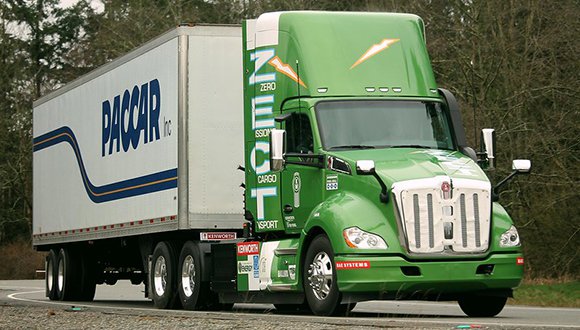Fuels: A State of Transition
- June 23, 2022
- Steven Simmons

Against the backdrop of soaring fossil fuel prices due to the war that Russia is waging on Ukraine, a transition to cleaner fuels is underway in the Northwest that will touch nearly all aspects of the economy.
With the retirement of coal-fired power plants in the Northwest, the power system currently generates electricity from clean hydropower, wind, and solar, and to a degree natural gas, which emits less greenhouse gas than coal. As plug-in battery electric vehicles become increasingly popular with consumers, there will be less reliance on petroleum fuels like motor gasoline. Homes and businesses may utilize more electric options for heating and cooking, supplanting tradition use of natural gas. Behind the scene, new fuels with lower carbon-emitting intensities, such as renewable natural gas (RNG) and renewable diesel, are already being blended into the existing fossil fuel-based natural gas and petroleum distribution systems. And although it may be a decade or more away, clean hydrogen could be a fuel of the future and the final piece to a clean-energy economy.
At its June meeting, the Council hosted a panel of experts from Oregon and Washington to discuss the statis of current and future fuels in the region. Steven Simmons, fuels lead in the Council’s Power Planning Division, said the top three fossil fuels in order by consumption in the four states’ region are natural gas, motor gasoline, and diesel. While the latter two are primarily vehicle fuels, natural gas is versatile and is used for electricity generation, heating and cooking, industrial processes, and transportation. In addition to the traditional natural gas analysis, the Council’s Northwest 2021 Power Plan for the first time includes analyses of roadway transportation fuels and future hydrogen production and uses in the region.
Glenn Blackmon, manager of the Washington State Energy Policy Office, told the Council that the state’s 2021 Washington State Energy Strategy evaluates all energy uses across the entire economy to the year 2050 and was designed to align with the state’s clean electricity laws and greenhouse gas emission limits. Electrification is a key component of the strategy and by 2050, the strategy envisions electricity as the dominate form of energy for the state.
Blackmon also said clean hydrogen is an important piece of the strategy, but it does not have a significant role until later in the planning horizon. Blackmon also said that hydrogen use in the state and the production of hydrogen to meet that demand may be separate. In other words, it may come down to tradeoffs between the ability of the electrical transmission system to deliver renewable electricity to hydrogen production sites in the state versus the fuel being produced elsewhere and being delivered to the state via pipeline.
Stephanie Celt, Senior Energy Policy Specialist at the Washington energy office, said there is strong interest in hydrogen in Washington as the result of the state’s bold strategy to transition to a fully clean energy system and specific policies related to hydrogen. The U.S. Department of Energy (DOE) has launched a program to provide funding for clean hydrogen hubs across the country. These hubs are expected to support production and use of clean hydrogen. Celt noted that the priorities of the DOE hydrogen program align with Washington’s priorities. For instance, the DOE program focuses on equity-, environmental-, and energy-justice impacts, which aligns well with Washington’s 2021 Healthy Environment for All (HEAL) Act, described on the website of the Washington Department of Health as “… a historic step toward eliminating environmental and health disparities among communities of color and low income households.”
Colin McConnaha, manager of the Office of Greenhouse Gas Programs at the Oregon Department of Energy, said Oregon’s Clean Fuels Program was implemented in 2016 to address transportation fuels. Transportation fuels contribute roughly 36 percent of statewide emissions. For the electricity sector, Oregon enacted the a suite of clean energy bills in 2021 that require electric utilities to provide 100-percent clean electricity by 2040.
Continuing the state’s focus on responding to climate-change impacts, this year the Oregon Department of Environmental Quality will begin implementing the Climate Protection Program, which will apply to natural gas fuel use in buildings and transportation. This program will help to drive electrification and possible hydrogen use. Combined, these programs will address roughly 75 percent of Oregon’s greenhouse gas emission sources.
The Clean Fuels Program was designed to reduce the carbon intensity of transportation fuels sold in Oregon. As Cory-Ann Wind, the Oregon Clean Fuels Program Manager, explained, the program is focused on lifecycle emissions, not just tailpipe emissions. This approach accounts for the full “well-to-wheels” emissions for petroleum-based fuels, and also for cleaner biofuels such as ethanol. Wind said the carbon intensity of biofuels such as biodiesel can vary substantially. “It really depends on what the fuel is made from; is it from used cooking oil? If so then the carbon intensity is very low,” she said, “But if it’s made from soy beans, a crop, then the energy inputs are higher, and the final fuel product has a higher carbon intensity.”
To date, the Clean Fuels Program has been very successful in reducing the amount of greenhouse gas released from liquid transportation fuels in the state and, has also enabled electric utilities in the Oregon to invest nearly $44 million in electric vehicle infrastructure. A key point from this program, Wind said, is that it is possible that eventually transportation will fully transition to electric drives, either plug-in battery electric or fuel cells, but in the meantime low-carbon biofuels like renewable diesel can help lower emissions from existing vehicle use.
“It’s an exciting time of change for fuels in the region,” Simmons said. “We are embracing the change and are expanding the Council’s Natural Gas Advisory Committee (NGAC) to include analysis of all fuels, including fossil, biofuels and hydrogen.”
To follow developments, see our advisory committees page, which includes a link to the Natural Gas Advisory Committee.



